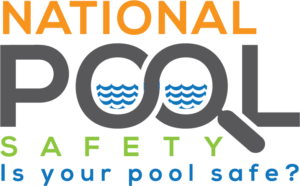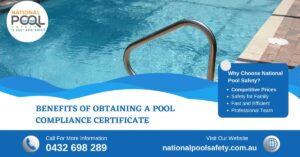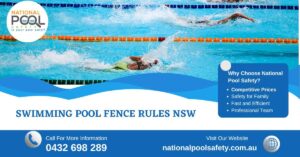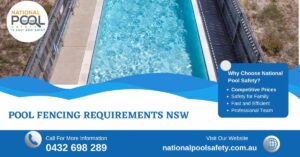Swimming Pool Fence Regulations NSW
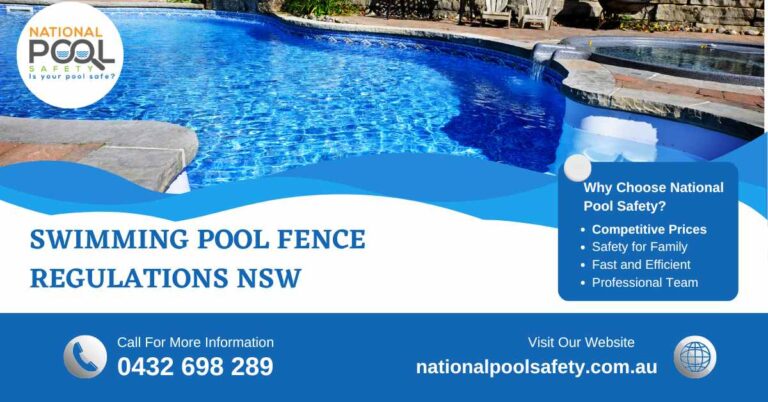
Swimming pool fences in New South Wales (NSW) are more than just barriers—they’re lifesaving measures. With over 374,000 pools in NSW, ensuring compliance with pool fencing laws is crucial to prevent tragic accidents, particularly among young children. This guide provides an in-depth look at swimming pool fence regulations in NSW, with answers to frequently asked questions to keep you informed and compliant.
Ensure the safety of your pool by scheduling a Swimming Pool Fence Inspection to verify that your pool barriers meet all the necessary regulations and provide secure access for your family and guests.
Why Are Pool Fencing Regulations Important?
Pool fencing regulations aim to prevent drownings and injuries by minimizing risks associated with pool access. Non-compliance can result in significant fines, ranging from $500 for minor breaches to $5,500 for more severe violations.
By following these regulations, you’re not just avoiding penalties—you’re protecting lives.
Key Swimming Pool Fence Requirements in NSW
Here are the essential requirements for swimming pool fencing compliance in NSW:
1. Barrier Heights
- Internal Pool Fences: Must be at least 1200mm high from the finished ground level.
Boundary Fences: If the boundary fence forms part of the pool barrier, it must be at least 1800mm high on the pool side.
2. Non-Climbable Zones (NCZ)
- Objects like sheds, trees, and furniture must be at least 900mm away from the pool fence to prevent climbing.
- Horizontal climbable bars must be spaced 900mm apart to deter access.
3. Gaps and Openings
- Gaps at the bottom of the fence must not exceed 100mm.
- For mesh barriers, holes must be:
- ≤13mm for fences 1200mm or higher.
- ≤10mm for fences shorter than 1200mm.
4. Self-Closing Gates
- Pool gates must be self-closing and self-latching.
- Regular maintenance ensures proper functionality.
5. Signage Requirement
- A CPR sign must be permanently displayed within 3 metres of the pool area.
Pool Inspection and Compliance
Under the Swimming Pools Act 1992, all pools must:
- Be Registered: Register your pool on the NSW Swimming Pool Register.
- Undergo Inspections: A valid pool safety certificate is required for leased properties or when selling your home.
Inspectors assess fences and barriers based on the AS1926.1 standards, specific to the pool’s construction date:
- Pre-2008: AS1926-1986.
- 2008–2013: AS1926.1-2007.
- Post-2013: AS1926.1-2012.
FAQ: Common Questions About Pool Fence Regulations in NSW
1. What are the rules for a pool boundary fence in NSW?
A pool boundary fence must:
- Be a minimum of 1800mm high on the pool side.
- Maintain a non-climbable zone (NCZ) of at least 900mm.
- Ensure no objects or structures within 500mm that could aid climbing.
2. What are the requirements for a swimming pool in NSW?
Swimming pools in NSW must:
- Be surrounded by a child-resistant barrier meeting AS1926.1 standards.
- Feature a self-closing gate.
- Display CPR signage within 3 metres of the pool.
- Be inspected and registered on the official NSW Swimming Pool Register.
3. Do all pools in Australia need a fence?
Yes, most pools in Australia require fencing to comply with national safety standards, unless exempted (e.g., very small portable pools or certain older pools with existing alternative barriers).
4. Does a pool have to have a fence around it?
Yes, unless exempted, all pools in NSW must be surrounded by compliant fencing. Boundary fences may serve as part of the barrier if they meet the specified requirements.
Tips to Stay Compliant
- Conduct Regular Inspections: Use a DIY checklist to ensure your pool area is compliant.
- Maintain the Fence: Repair damages promptly and remove climbable objects near the fence.
- Book Professional Inspections: Certified inspectors can help identify non-compliance issues.
Protect Lives and Avoid Penalties
Compliance with swimming pool fence regulations is non-negotiable. By adhering to the rules, you not only avoid hefty fines but also contribute to a safer community.
For more information or to schedule an inspection, visit National Pool Safety
